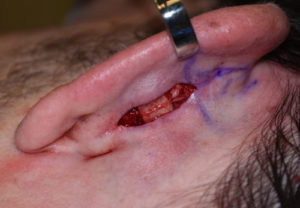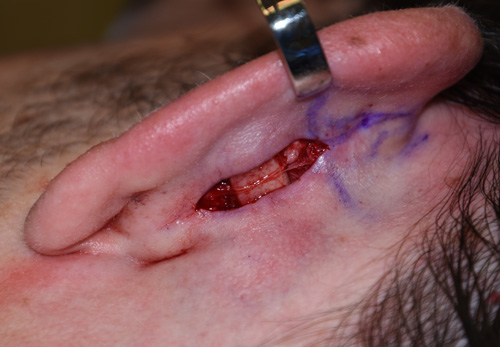The appearance of the external ear is completely controlled by the shape of the cartilage that lies within it. Short of the lobule, any change to the ear requires manipulation of its cartilage framework. This is seen in the commonly performed setback otoplasty for protruding ears where bending of the cartilage moves it closer to the side of the head. There are few instances where the ear is required to be moved further from the side of the head.
In the October 2019 issue of the journal Aesthetic Plastic Surgery, an article on aesthetic ear surgery entitled ‘Surgical Correction of the Lying Ear Deformities’ was published. In this paper the authors described their experience with aesthetically change the ear that is naturally folded back too far. This specifically refers an ear where the helical rim sits behind the antihelical fold due to a conchoscaphal angle that is less than 90 degrees. Their technique consists of a retroauricular approach with an initial release of any fibrous bands at the conchoscaphal angle, paired longitudinal cartilage releases along the border of the antihelix and placement of horizontal mattress sutures to change the conchoscaphal angle as close to 90 degrees as possible. In the tightest part of the deformity interpositonal cartilage grafts were used to open the angle.
Over a one year period a total of 37 patients (72 ears) were treated. Satisfactory results were obtained in most patients. Revision surgery was necessary in 8% of the patients due to recurrence or undercorrection. No infections occurred.
The lying ear deformity appears to be more common in Asian patients, where by the authors admission such patients prefer a larger or more open ear. Caucasian patients, particularly in the U.S., have more of an affinity for less protrusive ears. Thus the preponderance of setback otoplasties in the Western world. As a result, the only equivalent to the actual lying ear deformity is that of an overdone otoplasty where the helical rim is pulled back too far and blunting of the conchoscaphal angle results.

Dr. Barry Eppley
Indianapolis, Indiana



